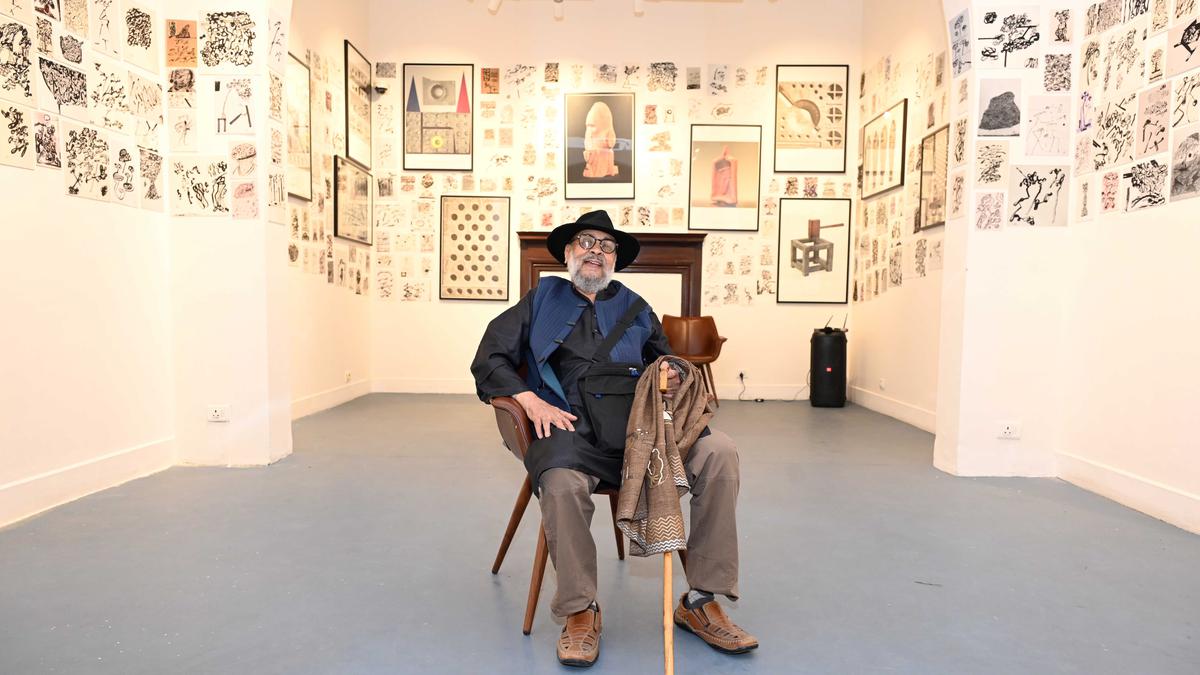
Himmat Shah at 90 | Stories in ink and diamonds
The Hindu
Sculptor Himmat Shah turns 90 and takes his exploration of the human form and ideas of transience in a new direction
When I meet Himmat Shah at Bikaner House in Delhi, I cannot guess from his demeanour — joking, laughing and gently flirting with the guests — that he has just turned 90. We are at Under the Mask, an exhibition that opened at Bikaner House last month before moving to Art Magnum. “I did all these drawings during the lockdown,” he says, pointing at the display of intricate non-figurative linear images in black ink and pencil on the walls. “It was difficult to step out to visit my studio in Garhi [20 km from his house in Jaipur], which is my daily routine, much like eating my breakfast.”
I can’t help but smile at the light-hearted expression on his face, as I move closer to the works. With over 300 drawings in the pandemic series, 40 originals are on display alongside smaller prints of the remaining art. “These drawings delve deeper into Shah’s understanding of the human spirit, of the ability to fight through difficult times, and to self-realise despite adversity,” says curator Jyotirmoy Bhattacharya. The exhibition is in collaboration with the Jaipur Centre of Culture and Arts.
A large sculpture in bronze catches one’s eye. Part of a new series (the rest is on display at the JCCA), it is over eight feet tall and is a more abstract expression as compared to Shah’s earlier work that’s based on the human figure and face.
Another big attraction is a series of over 20 photographs by Raghu Rai, who has documented Shah over the years. The stunning black-and-white images capture his artistic exploration and life outside the studio. Photographs of Shah working on his sculptures hang alongside shots of him trekking and exercising. One of the most imposing frames is where the photographer got the artist to pose alongside his new bronze sculpture.
The most unique exhibit of Under the Mask, however, is housed in a darkened room, where the spotlight picks out two vitrines with two sculptures carved in diamond. The tiny pieces are magnified by a projector. This is the first time that Shah — who has mastered many mediums in his career, from terracotta and stone to plaster of Paris — has worked with gems. Inspired by Jaipur’s local craftsmanship, he collaborated with diamond cutters for almost a year to complete the project.
Mukesh Singh, a young sculptor and student of Shah’s, who worked closely with the artist on the project, says, “I learnt much from the master artist for whom material is both a challenge and a gift of expression.”
One of the sculptures is inspired by Hammer on the Square, a large drawing that Shah had executed early in his career. Depicting a hammer balanced on a square, it highlights key ideas of the artist’s works: fragility and the transience of existence, and the heightened relationship between ephemeral layers and stasis. Shah, who describes his work as spontaneous, has always had an intense connection to lost civilizations and cultures. Perhaps because he grew up in Lothal, Gujarat, surrounded by the remnants of a prominent port city of the Indus Valley civilisation.













